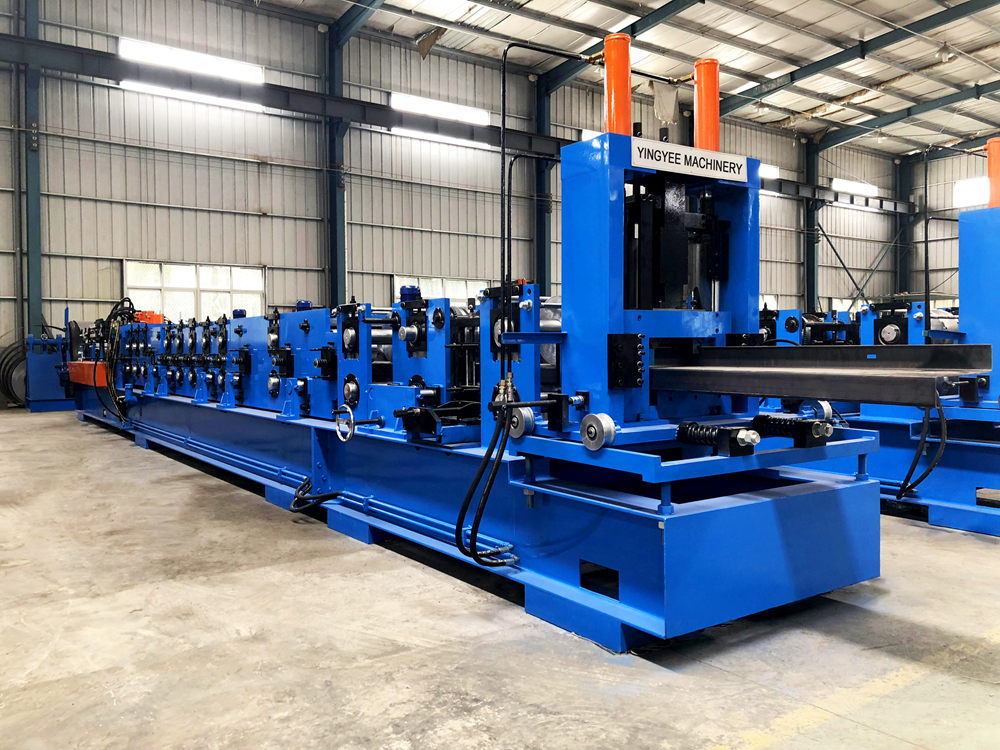
Understanding Stud and Track Forming Machines A Key Component in Modern Construction
In the realm of modern construction and manufacturing, stud and track forming machines have emerged as essential tools for producing metal framing components that form the backbone of numerous building projects. These machines are instrumental in the creation of the steel studs and tracks used for walls, ceilings, and other structural applications, demonstrating efficiency and precision in fabrication processes.
What Are Stud and Track Forming Machines?
Stud and track forming machines are specialized equipment designed to produce steel studs and tracks from flat metal sheets. The production process typically involves feeding metal coils into the machine, where they are cut, shaped, and formed into various profiles. The final product comes in different sizes and dimensions, tailored to meet specific construction requirements.
A stud is a vertical component of a wall framing system, while a track serves as the horizontal frame in which the studs are placed. Together, they create a sturdy and reliable framework that supports drywall, insulation, and other materials used in construction.
The Working Mechanism
The functionality of stud and track forming machines can be broken down into several key stages feeding, forming, cutting, and stacking.
1. Feeding The process begins with rolls of steel being loaded into the machine, usually a continuous coil. The machine uses a feeder system to pull the coil into the forming station. 2. Forming As the metal moves forward, it passes through a series of rollers that progressively shape the steel into the desired profile. This is done through cold forming techniques, allowing the metal to retain its strength without the need for heating.
3. Cutting Once the metal is shaped, it is cut to specific lengths. The machines often come equipped with automatic cutting systems that ensure precision and repeatability.
4. Stacking The finished components are then automatically stacked for easy handling and transportation. This can either be done manually or through the use of robotic systems, depending on the level of automation in the machine.
Benefits of Stud and Track Forming Machines
The advantages of using stud and track forming machines are numerous

- Efficiency The automating of the production process means that large quantities of studs and tracks can be manufactured in a shorter period, significantly reducing labor costs and time associated with construction projects.
- Precision Modern forming machines use advanced technology to ensure that each piece is cut and formed to precise specifications. This accuracy reduces material waste and ensures a better fit during the installation phase.
- Versatility These machines can often be adjusted to produce different profiles and sizes, allowing manufacturers to cater to a variety of construction needs. Whether it’s a standard size for residential construction or a custom profile for a commercial project, the machines are adaptable.
- Cost-Effectiveness By streamlining the production process and reducing labor needs, companies can lower costs. Moreover, the durability and strength of steel components mean fewer repairs and replacements over time, offering long-term savings.
Applications in Construction
Stud and track framing systems are widely used in various applications, from residential homes to large commercial buildings. They are particularly beneficial in projects where lightweight and fire-resistant materials are required. Additionally, these systems facilitate easy horizontal and vertical expansion, making them ideal for renovations and modifications.
In commercial settings, the speed and efficiency of stud and track forming machines enable contractors to meet tight deadlines while maintaining high-quality standards. The use of cold-formed steel framing is also favored for its environmental benefits, as it is recyclable and reduces the carbon footprint of construction activities.
Future Trends
As technology advances, the future of stud and track forming machines looks promising. The incorporation of smart technology and automation, such as the Internet of Things (IoT), is expected to improve production processes further. Real-time data analytics can provide insights into machine performance, enabling predictive maintenance and enhancing overall productivity.
Continued innovations in material science may also lead to the development of advanced steel grades, which can enhance the strength-to-weight ratio of studs and tracks, making them even more beneficial in construction.
Conclusion
In conclusion, stud and track forming machines play a pivotal role in the modern construction industry. Their ability to produce high-quality, precise, and durable components efficiently contributes significantly to the overall effectiveness of building projects. As technology evolves, these machines will likely become even more sophisticated, continuing to enhance the construction processes of the future.